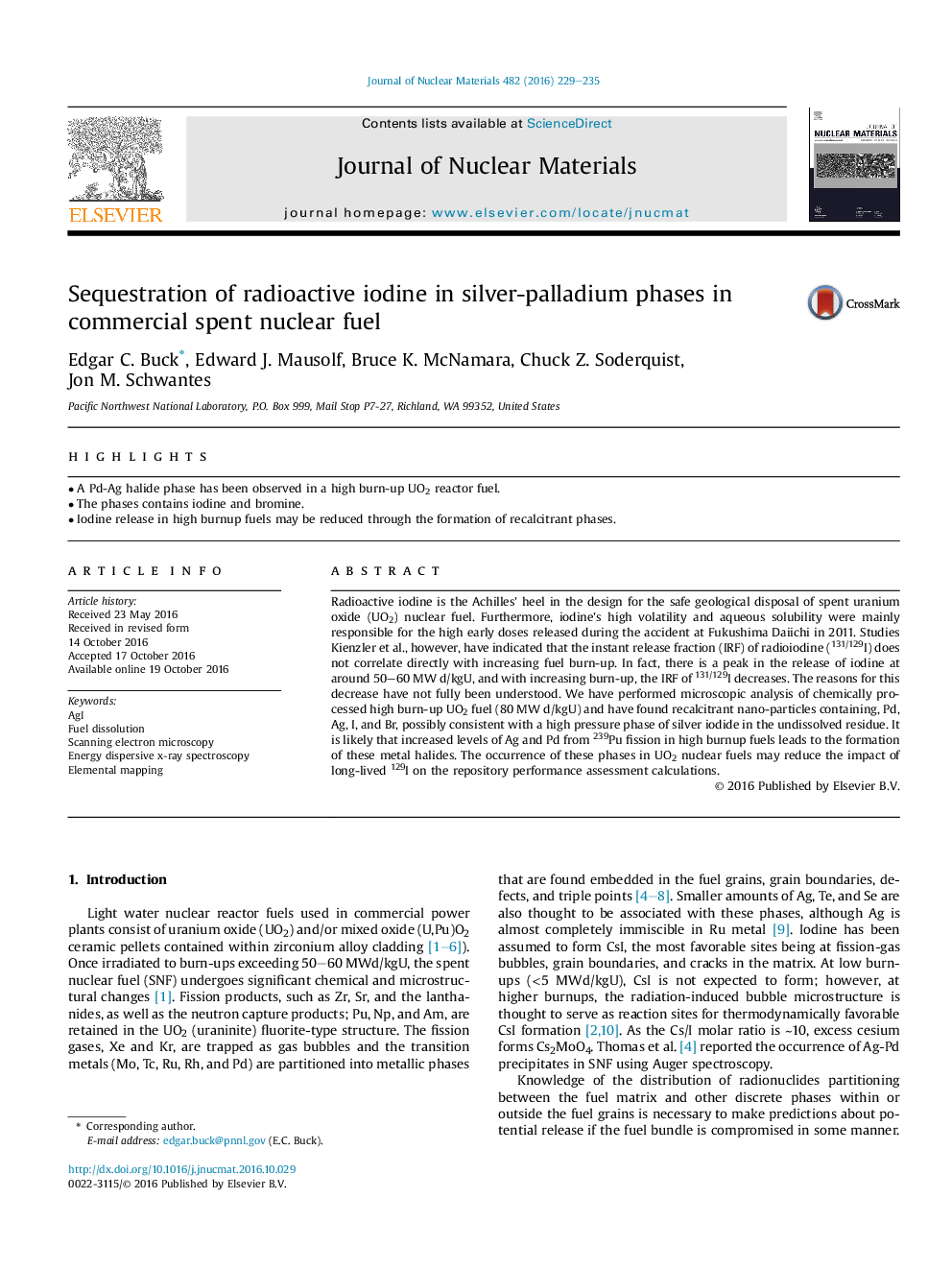| Article ID | Journal | Published Year | Pages | File Type |
|---|---|---|---|---|
| 5454387 | Journal of Nuclear Materials | 2016 | 7 Pages |
Abstract
Radioactive iodine is the Achilles' heel in the design for the safe geological disposal of spent uranium oxide (UO2) nuclear fuel. Furthermore, iodine's high volatility and aqueous solubility were mainly responsible for the high early doses released during the accident at Fukushima Daiichi in 2011. Studies Kienzler et al., however, have indicated that the instant release fraction (IRF) of radioiodine (131/129I) does not correlate directly with increasing fuel burn-up. In fact, there is a peak in the release of iodine at around 50-60 MW d/kgU, and with increasing burn-up, the IRF of 131/129I decreases. The reasons for this decrease have not fully been understood. We have performed microscopic analysis of chemically processed high burn-up UO2 fuel (80 MW d/kgU) and have found recalcitrant nano-particles containing, Pd, Ag, I, and Br, possibly consistent with a high pressure phase of silver iodide in the undissolved residue. It is likely that increased levels of Ag and Pd from 239Pu fission in high burnup fuels leads to the formation of these metal halides. The occurrence of these phases in UO2 nuclear fuels may reduce the impact of long-lived 129I on the repository performance assessment calculations.
Related Topics
Physical Sciences and Engineering
Energy
Nuclear Energy and Engineering
Authors
Edgar C. Buck, Edward J. Mausolf, Bruce K. McNamara, Chuck Z. Soderquist, Jon M. Schwantes,
